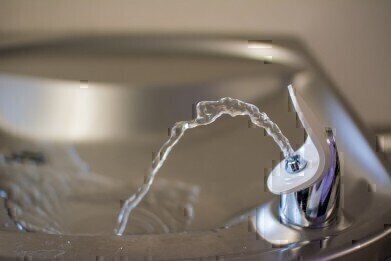Water/Wastewater
How Will Trump's Changes Affect Drinking Water?
Apr 26 2017
Despite his claims to “promote clean air and clean water”, Donald Trump’s first two months in the White House have seen a number of anti-environmental measures being introduced. As well as trying to dismantle the Environmental Protection Agency (EPA) and putting an end to NASA's climate change research, Trump has also repealed several orders regarding American streams and waterways.
In particular, he has done away with Obama's Stream Protection Rule, introduced the day before Trumps’ inauguration, and attempted to roll back the Waters of the United States Rule, brought in by his predecessor in 2015. This could have dire consequences for the protection of drinking water across the US, as well as costing taxpayers huge amounts in local administrative and maintenance costs.
What is the Waters of the United States Rule?
An addition to the Clean Water Act of 1972, Obama’s rule expanded the EPA’s definition of a body of water subject to national regulation from “navigable” waters to any continuous flow of water. This prevented landowners from circumventing the rule by digging ditches, thus rendering it “unnavigable” and therefore exempt from regulation.
By repealing the rule, Trump will make many bodies of water out of national jurisdiction, leaving responsibility for its cleanliness and maintenance at the feet of state municipalities. With state budgets varying wildly across the US, wealthier municipalities would have a clear advantage and poorer ones might not be as scrupulous in safeguarding state water sources.
What’s more, developers are required to offset the destruction of local habitats during construction under current legislation. If changes are made, this expense may fall to taxpayers to cover, according to Durelle Scott, a civil engineering professor at Virginia Tech in Blacksburg, VA.
How will this affect drinking water?
With different states having different budgets at their disposal, more or less care will be devoted to maintaining the cleanliness and protection of water supplies in neighbouring municipalities. However, water doesn’t respect arbitrary borders; it will continue to flow from one to the next, regardless of how well (or how poorly) it has been maintained.
“Water runs downhill. Wherever you are in a river system, it doesn’t matter when it crosses state lines. People think when something goes into a stream, it’s gone. But it’s going to travel downstream,” explains Scott. “When we think about water management, we have to think about the entire watershed.”
If Trump continues to repeal existing legislation regarding the protection of our streams and waterways, along with the best ways to clean up flooded lakes and reservoirs, the future looks discouraging not only for human water supplies, but also for other plant and animal life living in the area.
On an immediate level, this will mean less diverse ecosystems, reduced numbers of species and a decline in fishery opportunities. It could also translate into a reduction in the number of available recreational spaces, to boot. Clearly, despite all of Trump’s rhetoric purporting to maintain the cleanliness of our water and air, his policy runs the risk of jeopardising both and more.
Events
May 05 2024 Seville, Spain
May 13 2024 Munich, Germany
May 23 2024 Beijing, China
May 23 2024 Beijing, China
Jun 10 2024 Algiers, Algeria













